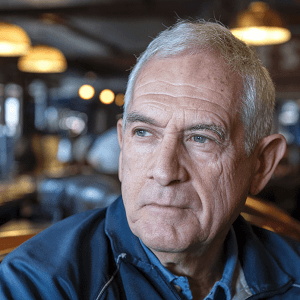Discover the remarkable ERJ-135, a compact regional jet that has revolutionized short to medium-haul air travel. This comprehensive guide explores the aircraft’s specifications, unique features, and what makes it a preferred choice for regional airlines worldwide.
Overview of the ERJ-135
The ERJ-135, manufactured by Brazilian aerospace company Embraer, represents a milestone in regional aviation engineering. This compact jet comes in two primary variants:
- ERJ-135ER (Extended Range) – baseline model with 37-passenger configuration
- ERJ-135LR (Long Range) – enhanced fuel capacity and upgraded engines for extended operations
Introduction to the ERJ-135
The ERJ-135 exemplifies operational efficiency in regional aviation, offering airlines remarkable flexibility in their fleet operations. Its adaptable seating configurations include:
| Configuration Type | Seat Count | Seat Pitch | Ideal Usage |
|---|---|---|---|
| High Density | 37 seats | 31-inch | Short-haul routes |
| Comfort Layout | 30 seats | 36-inch | Extended journeys |
History and Development
The ERJ-135’s development marked Embraer’s strategic expansion in the regional jet market. Entering service in 1999, it shares approximately 95% of components with its larger sibling, the ERJ-145, significantly reducing maintenance costs and operational complexity for airlines.
Specifications of the ERJ-135
The aircraft’s key physical specifications include:
- Length: 26.33 meters (86.4 feet)
- Service ceiling: 37,000 feet
- Design optimized for shorter runway operations
- High commonality with ERJ family (95% shared parts)
Technical Specifications
Despite its compact size, the ERJ-135 delivers impressive versatility. Some operators choose a premium configuration with 20 seats at a 41-inch pitch, demonstrating the aircraft’s adaptability to various market demands.
Engine and Performance
The ERJ-135’s performance capabilities are powered by twin Rolls-Royce AE 3007 turbofan engines, known for:
- Exceptional reliability
- Optimal fuel efficiency
- Competitive cruise speeds
- Enhanced range in LR variant
Features of the ERJ-135
The ERJ-135’s distinctive features make it a standout choice for regional operations, combining efficiency with practical design elements:
- Fixed low wings with optional winglets
- Regular dihedral tail design
- Underwing-mounted jet engines
- Quick boarding and deplaning capabilities
- Simplified maintenance procedures
Design and Comfort
While the aircraft’s design prioritizes operational efficiency, passenger comfort considerations include:
- Compact cabin layout
- Variable seating configurations
- Efficient boarding process
- Note: Some passengers report limited legroom and narrow seating in high-density configurations
Cabin and Seating
The ERJ-135’s cabin configuration demonstrates remarkable versatility, offering airlines multiple seating layouts to match diverse market requirements:
- High-density configuration – 37 seats with 31-inch pitch, optimized for shorter routes
- Standard comfort configuration – 30 seats with 36-inch pitch, ideal for longer journeys
- Premium layout – 20 seats with luxurious 41-inch pitch, perfect for high-end market segments
The aircraft’s intimate cabin design presents both advantages and limitations. While the compact fuselage creates a more personal flying experience, it does result in restricted overhead bin space. However, thoughtful design elements like efficient underseat storage help offset these constraints, allowing airlines to maintain operational efficiency while balancing passenger comfort needs.
Insights into the ERJ-135
Since its 1999 debut, the ERJ-135 has established itself as a versatile regional jet available in two key variants:
| Variant | Key Features |
|---|---|
| ERJ-135ER (Extended Range) | Baseline model with standard 37-passenger configuration |
| ERJ-135LR (Long Range) | Enhanced fuel capacity and upgraded engines for extended operations |
Market Position and Usage
The ERJ-135 excels in short-haul operations, particularly where larger aircraft would prove economically unfeasible. Its design emphasizes operational efficiency through quick turnaround times and versatile runway capabilities, making it ideal for both hub-and-spoke networks and point-to-point services between smaller cities.
In the competitive regional aviation sector, the ERJ-135 stands out by offering airlines precise capacity management for lower-demand routes. This strategic advantage has made it particularly valuable for regional carriers and major airlines seeking to optimize their route networks with more frequent services.
Future Prospects
The ERJ-135’s future outlook reflects the dynamic nature of aviation market trends. Its impressive 37,000-foot service ceiling continues to provide operational advantages, though emerging industry priorities around fuel efficiency and environmental impact present new considerations for operators.
The aircraft’s adaptability suggests potential evolution in its market role, with opportunities in specialized operations such as corporate or government services. The high commonality with other ERJ models offers possibilities for upgrades and modifications, potentially extending its operational lifespan in an increasingly competitive aviation landscape.





Leave a Reply